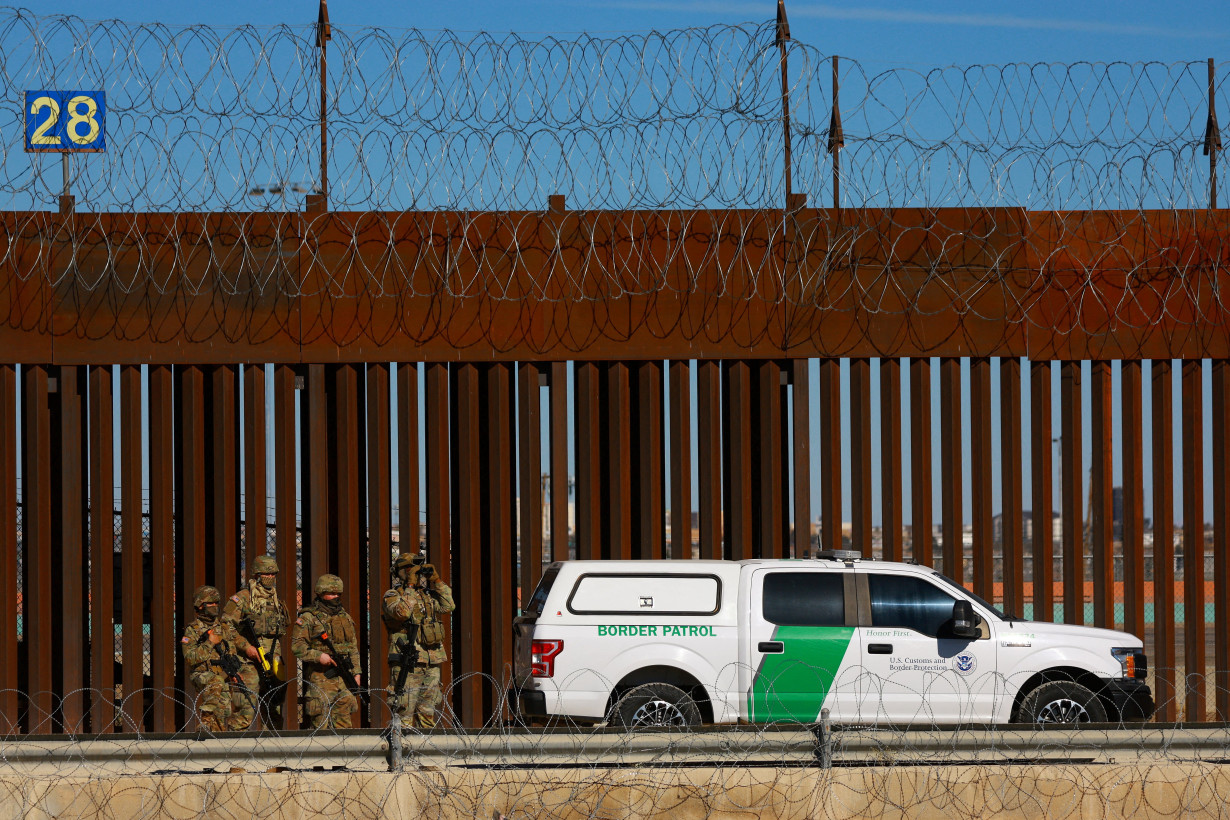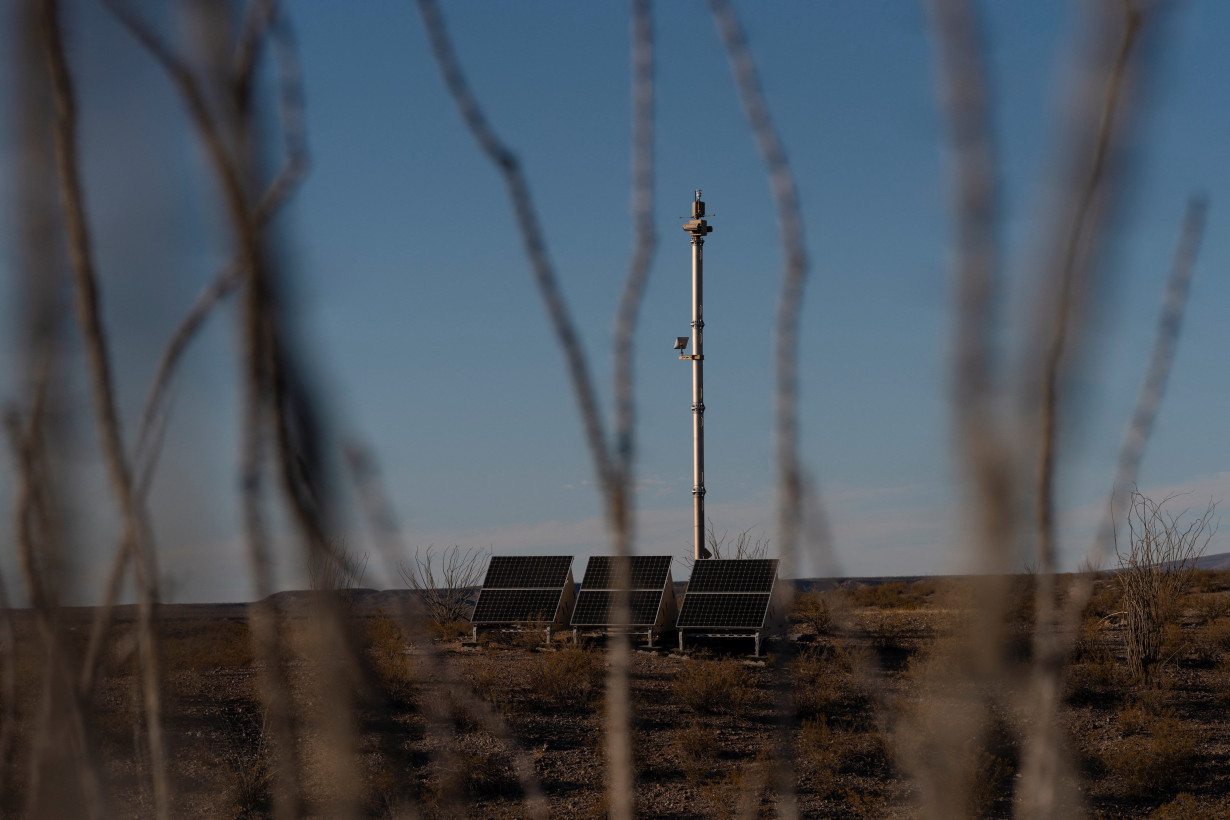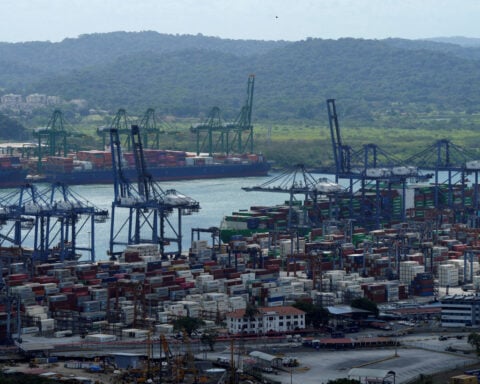By Ted Hesson
(Reuters) - U.S. President Donald Trump began a wide-ranging immigration crackdown when he took office on January 20, aiming to reduce illegal crossings at the U.S.-Mexico border and deport record numbers of immigrants who lack legal status.
BORDER SECURITY

The Republican Trump issued a series of executive orders when he returned to the White House, implementing a broad ban on asylum for migrants encountered at the southern border and sending in troops to assist border security efforts.
His measures built on some initiatives already under way by the end of Democratic President Joe Biden's tenure, including a similar asylum ban and a push to increase Mexican enforcement. The measures appear to have successfully reduced traffic.
U.S. Border Patrol arrested 8,300 migrants at the southern border in February, U.S. government figures show, the lowest monthly level since 2000 (monthly figures are not available prior to 2000).
Arrests at the U.S.-Mexico border in March were on pace to be similar or even lower, three U.S. officials told Reuters. One of the officials said arrests were on pace for about 7,400.

Migrant arrests are often used as a proxy to estimate illegal crossings although some migrants also enter undetected.
The February arrest total was a steep drop from the 141,000 migrants picked up in February 2024 before Trump returned to office and down from 29,000 in January, according to U.S. government figures.
ARRESTS AND DETENTION
The U.S. Department of Homeland Security estimated that some 11 million immigrants lacked legal status in 2022, a figure some analysts say has climbed to 14 million. Trump said in December that he wanted to deport all immigration law violators.

Trump's initial executive orders aimed to ramp up arrests of immigrants in the U.S. illegally but yielded mixed results during his first month in office.
During Trump’s first three weeks in office, U.S. Immigration and Customs Enforcement arrested about 14,000 people, border czar Tom Homan said in February. That amounts to 667 per day - twice last year’s average but on pace for a quarter million arrests annually - not millions.
Still, ICE has cast a wider net than during Biden's presidency, picking up more non-criminals and people with final deportation orders, including those who come to ICE offices for routine check-ins.
The number of immigrants without criminal records arrested by ICE and detained rose by 500% from mid-January to late-March, according to ICE statistics.
ICE had nearly 48,000 immigrants in custody as of March 23, agency data showed, well beyond its funded capacity of 41,500.
ICE's top official said the agency was trying to increase bed space, and private prison companies have announced plans to open new facilities and expand capacity.
The Trump administration also has flown migrants to a U.S. naval base in Guantanamo Bay, Cuba, triggering a legal challenge over their transfer outside the U.S. and into harsh conditions.
DEPORTATIONS
The Trump administration has struggled to increase deportation levels even as it has opened up new pathways to send migrants of other nationalities to Mexico and Central America.
Trump deported 37,660 people during his first month in office, Reuters reported in February, far fewer than the monthly average of 57,000 removals and returns in the last full year of Biden's administration.
The figures include both ICE "removals" and more informal U.S. Customs and Border Protection "returns" to Mexico.
The Trump administration rolled back Biden-era extensions of Temporary Protected Status for more than 1 million people from Venezuela and Haiti, potentially broadening the pool of people who could be deported.
The administration said it will revoke another form of legal status known as parole from half a million Cubans, Haitians, Nicaraguans and Venezuelans on April 24.
Trump has said he is weighing a similar move to strip the status from Ukrainians.
Trump invoked a wartime statute known as the Alien Enemies Act on March 15 to rapidly deport alleged Venezuelan gang members to El Salvador but the move was blocked by a federal judge and remains on hold while litigation continues.
The Trump administration has yet to release detailed deportation data that would show how many of those deported were arrested by ICE in the interior of the U.S., as opposed to those arrested at the border and quickly processed for deportation.
A senior Trump administration official said deportations were poised to rise in coming months as countries accept more deportees. But initial figures suggested Trump could struggle to match higher deportation rates during the last full year of the Biden administration when large numbers of migrants were caught crossing illegally, making them easier to deport.
(Reporting by Ted Hesson; Additional reporting by Idrees Ali; Editing by Mary Milliken, Chizu Nomiyama and Howard Goller)

 Trump has begun another trade war. Here's a timeline of how we got here
Trump has begun another trade war. Here's a timeline of how we got here
 Canada's leader laments lost friendship with US in town that sheltered stranded Americans after 9/11
Canada's leader laments lost friendship with US in town that sheltered stranded Americans after 9/11
 Chinese EV giant BYD's fourth-quarter profit leaps 73%
Chinese EV giant BYD's fourth-quarter profit leaps 73%
 You're an American in another land? Prepare to talk about the why and how of Trump 2.0
You're an American in another land? Prepare to talk about the why and how of Trump 2.0
 Chalk talk: Star power, top teams and No. 5 seeds headline the women's March Madness Sweet 16
Chalk talk: Star power, top teams and No. 5 seeds headline the women's March Madness Sweet 16
 Purdue returns to Sweet 16 with 76-62 win over McNeese in March Madness
Purdue returns to Sweet 16 with 76-62 win over McNeese in March Madness








